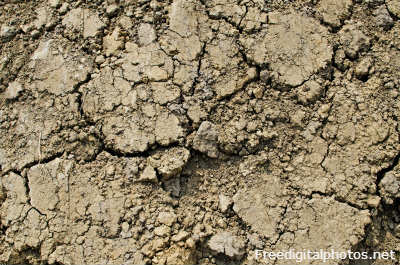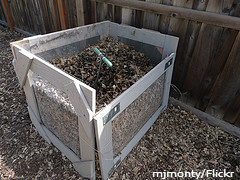The soil around your home can't be changed, but it can be improved. It will be hard work, and will take a long time to see any lasting changes, but it will be worth it. If you're looking to improve your soil quality and condition, keep reading for more tips from Movers.com.
Improving soil 
If your soil is extremely light--either silty or sandy-- mix in things to make it less porous. If your soil is the opposite and is very heavy and clay-like, loosen it and make it more porous.
What you're striving for is something in between sandy and clay-like, something between light and heavy. This kind of soil is called loam. Loam soils have large particles that make it porous enough and yet have enough small particles to hold it together and retain moisture and nutrients.
One of the best ways to improve soil is to add organic materials. You can add more material to make sandy soils more moisture retentive or to make clay-like soils more porous.
What to add
When adding things to your soil to change the structure and composition, what exactly should you add?
Organic matter and materials are the best bet to improve the soil quality. Decaying plant remains, compost, well-rotted manure and soil conditioners can be bought or made at home. Compost is an easy way to prevent waste from your household ending up in landfills and nourish your soil.
When your soil is too heavy
Clay soils are sticky and slippery when wet and bake when they're dry. However, they retain moisture and nutrients very well. Because clay soils are denser, they need organic materials that will make them more porous. Roots can barely penetrate and water drains poorly in these soil types.
Generally, heavy, clay-like soils are harder to cultivate except for a few days of the year. Usually they are so slow to dry out in the spring that early planting is impossible. Summer planting will only lead to heartache because of the excessive drying and cracking.
To improve your garden soil, try mixing two to three inches of organic material into the top six inches of the soil in your garden bed. This will help loosen it and improve its structure. The organic material will help spread the clay-like particles to allow for better drainage and for roots to create a footing.
When your soil is too light
Sandy and light soils need help retaining moisture. Because these types of soils are so porous water tends to flush right through and leads to frequent watering and feeding.
To increase the moisture and nutrients they absorb, add in clay-like materials and organic materials. Two to three inches of organic material such as compost or conditioner, tilled about six inches deep into the clay soil should help it retain more moisture.
The organic material will lodge itself in between the loose, sandy particles and act as a sponge, causing drainage to slow down and the soil to retain more moisture.
Around permanent plantings
Perennials, trees and shrubs will also benefit from soil improvements, but you need to do it without damaging the plants' roots. Often it's enough just to spread the organic matter over the soil surface like mulch. Earthworms, rain and microorganisms will do the rest of the work for you and carry it downward over time.
When to do it
If your climate is generally mild with rainy winters, you should work on your soil after fall cleanup. In regions with colder winters and spring and summer rainfall, you should condition your soil with your spring gardening preparation.